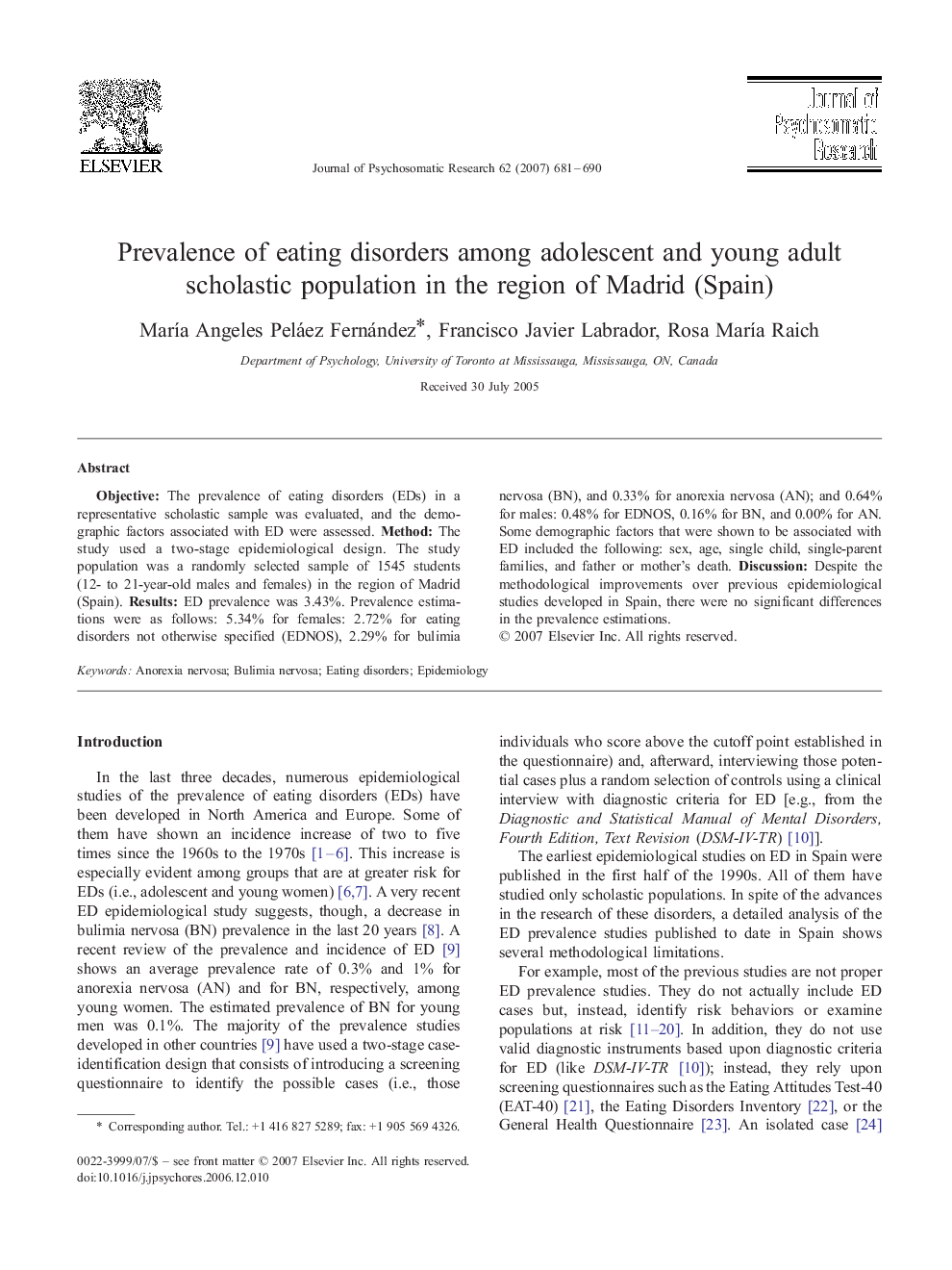| Article ID | Journal | Published Year | Pages | File Type |
|---|---|---|---|---|
| 950702 | Journal of Psychosomatic Research | 2007 | 10 Pages |
ObjectiveThe prevalence of eating disorders (EDs) in a representative scholastic sample was evaluated, and the demographic factors associated with ED were assessed.MethodThe study used a two-stage epidemiological design. The study population was a randomly selected sample of 1545 students (12- to 21-year-old males and females) in the region of Madrid (Spain).ResultsED prevalence was 3.43%. Prevalence estimations were as follows: 5.34% for females: 2.72% for eating disorders not otherwise specified (EDNOS), 2.29% for bulimia nervosa (BN), and 0.33% for anorexia nervosa (AN); and 0.64% for males: 0.48% for EDNOS, 0.16% for BN, and 0.00% for AN. Some demographic factors that were shown to be associated with ED included the following: sex, age, single child, single-parent families, and father or mother's death.DiscussionDespite the methodological improvements over previous epidemiological studies developed in Spain, there were no significant differences in the prevalence estimations.
